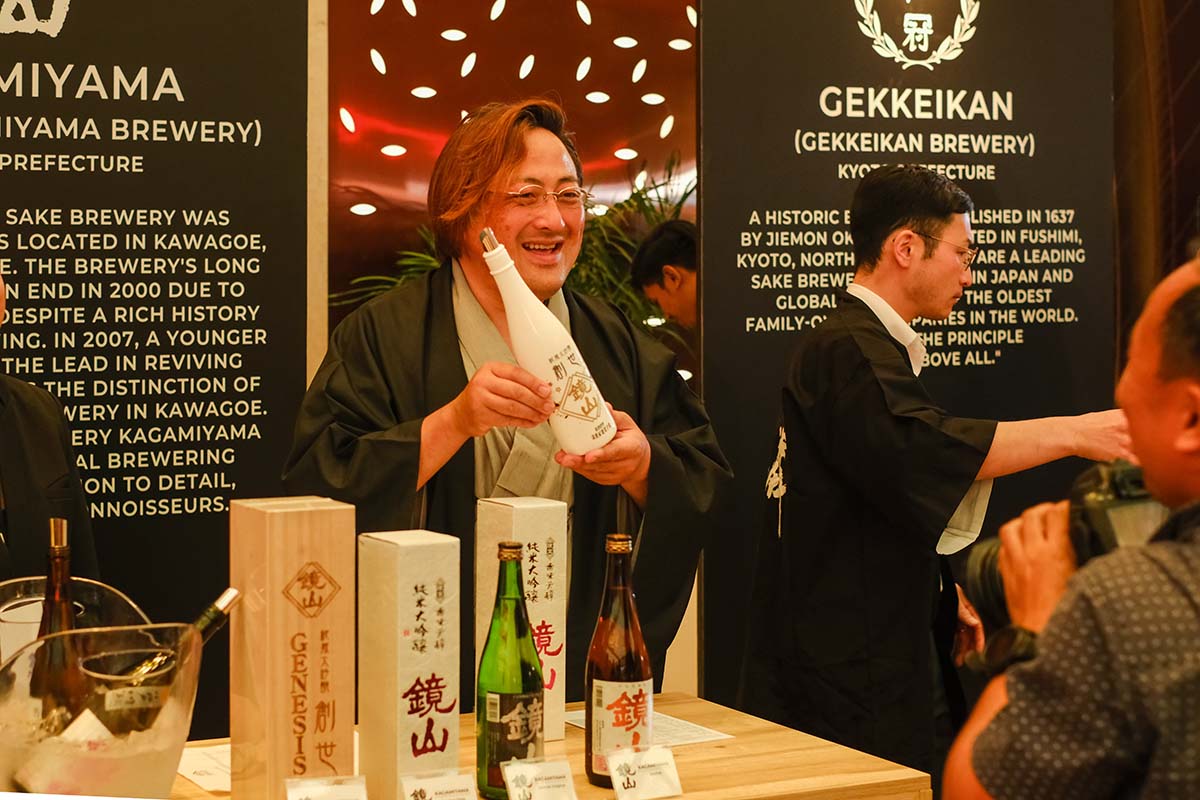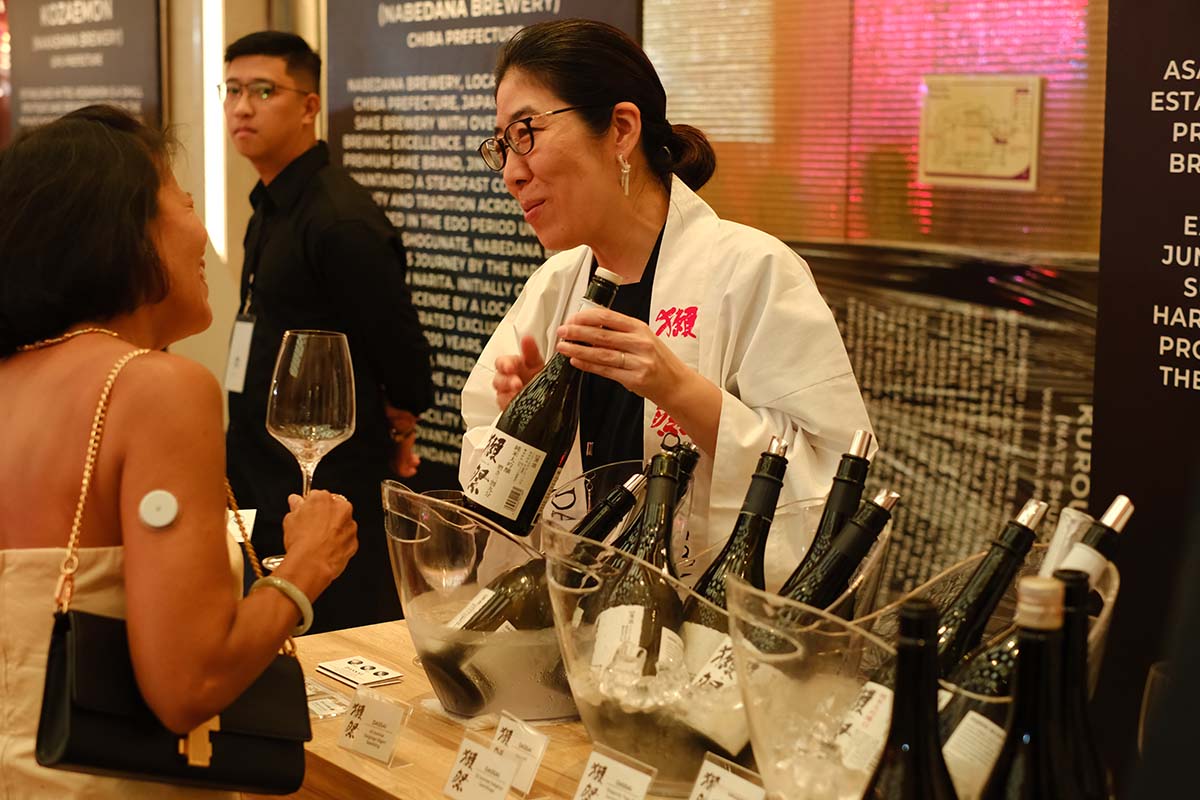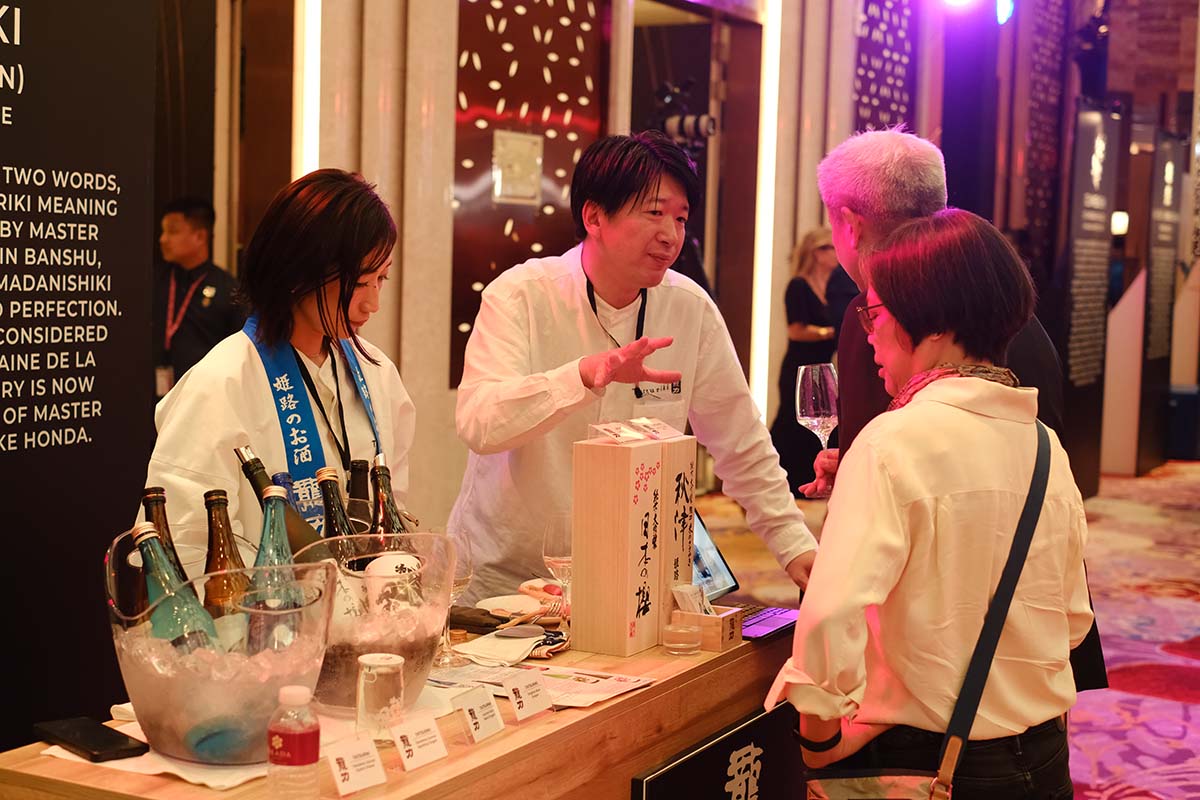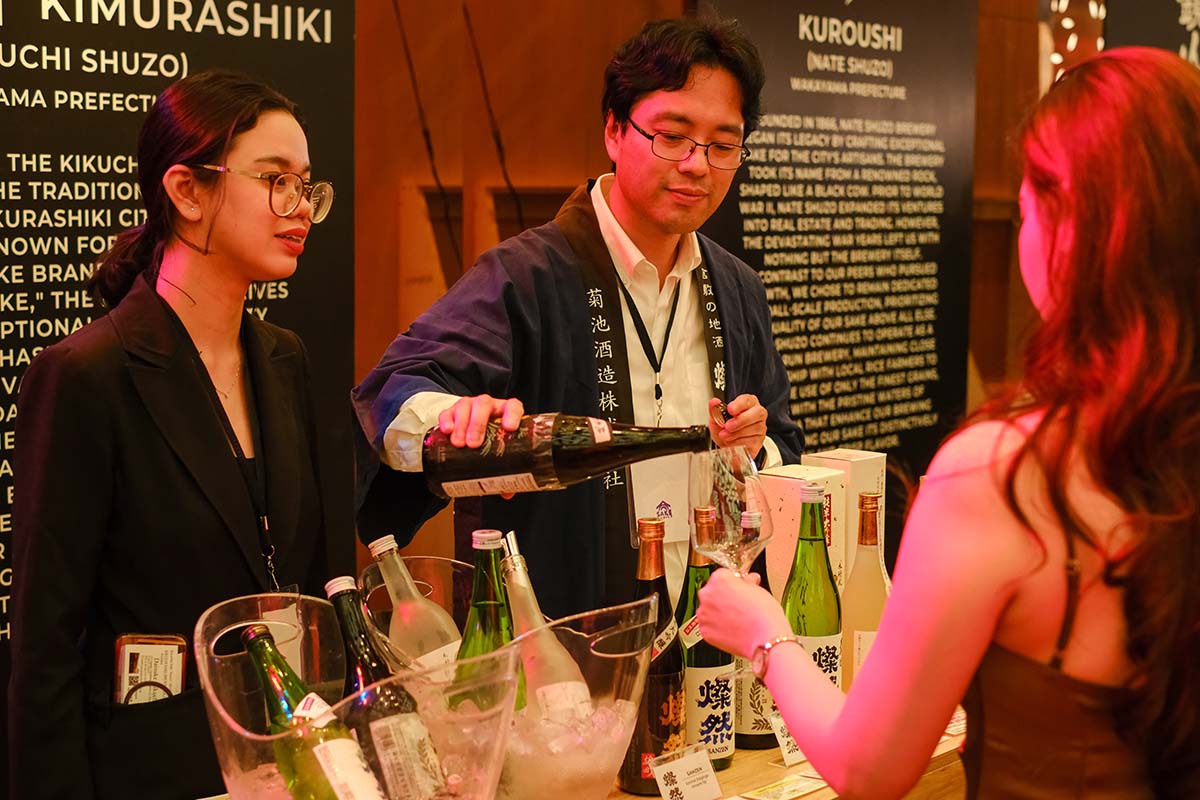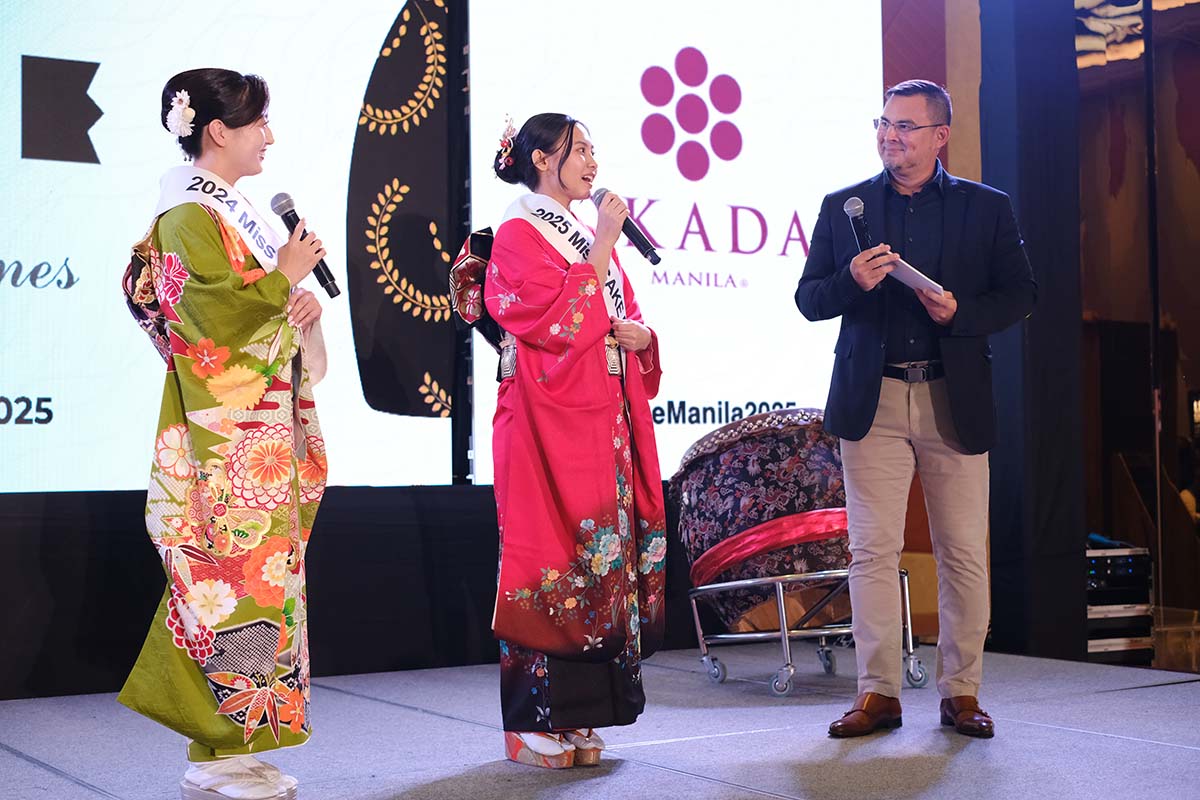It’s not every day you walk into a ballroom and feel like you’ve been dropped straight into Japan’s heartland.
But that’s exactly what SAKE MANILA 2025 delivered.
Held at the Grand Ballroom of Okada Manila, this year’s edition went far beyond a typical showcase of spirits. It was an immersion — a full-sensory dive into Japanese craftsmanship, culture, and community. From the first pour to the final toast, everything felt deliberate, genuine, and grounded.
Now in its second year, SAKE MANILA has established itself as more than just an industry event. It’s become a key gathering — not just for sake lovers or chefs, but for anyone who values how tradition, hospitality, and heritage can bring people together. After years of covering Japan’s ties with the world, I can say this with certainty: SAKE MANILA wasn’t just a party. It was a bridge — built one glass at a time.
More Than Just Sake


Let’s start with the numbers: over 200 labels were on offer — sake, shochu, Japanese whisky, gin, craft beer, and even wine. That alone was impressive. But what stood out most was the people behind the bottles.
These weren’t just sales reps — they were brewers, distillers, and brand owners. Some of their distilleries go back over a century. At each booth, you weren’t just offered a drink; you were handed a story. I found myself collecting flyers, asking questions, wanting to learn more. One of my favorite brands even had a business card embedded with three tiny plastic bubbles of rice — each one representing a different rice polishing ratio, or seimaibuai (精米歩合).
Guests at Sake Manila 2025 had the rare opportunity to meet and interact with sake brewers and brand ambassadors from Japan, gaining firsthand insight into each brand and bottle.
For the fellow sake fans out there: in brewing, polishing the rice means shaving away the outer layers, which contain fats and proteins that can cause off-flavors. The more you polish, the more refined the taste. A sake with a 23% ratio — meaning only 23% of the grain remains — is considered top-tier: elegant, aromatic, and clean.
Whether it was a quiet explanation of brewing techniques or a brewer proudly describing how his sake reflects the climate and water of his hometown, the passion was real. And that’s what separated this event from the typical expo — the presence of true craftsmanship, deep pride, and living tradition.
A Cultural Showcase in Every Sense
But SAKE MANILA wasn’t just about what was in the glass.
The night opened with a tuna-cutting ceremony — part ritual, part spectacle. As someone who seeks out akami at every Japanese restaurant (and chūtoro when in Japan), watching it live is always a thrill. The precision, the respect — it sets the tone.


From there, the program hit its stride: the thunder of taiko drums, the delicate strings of the koto played by Julia, the smooth jazz of Takumi’s sax, and a proper Tokyo lounge vibe from DJs Hideki and Junoy. Even Okada’s own troupe brought flair and polish to the stage.


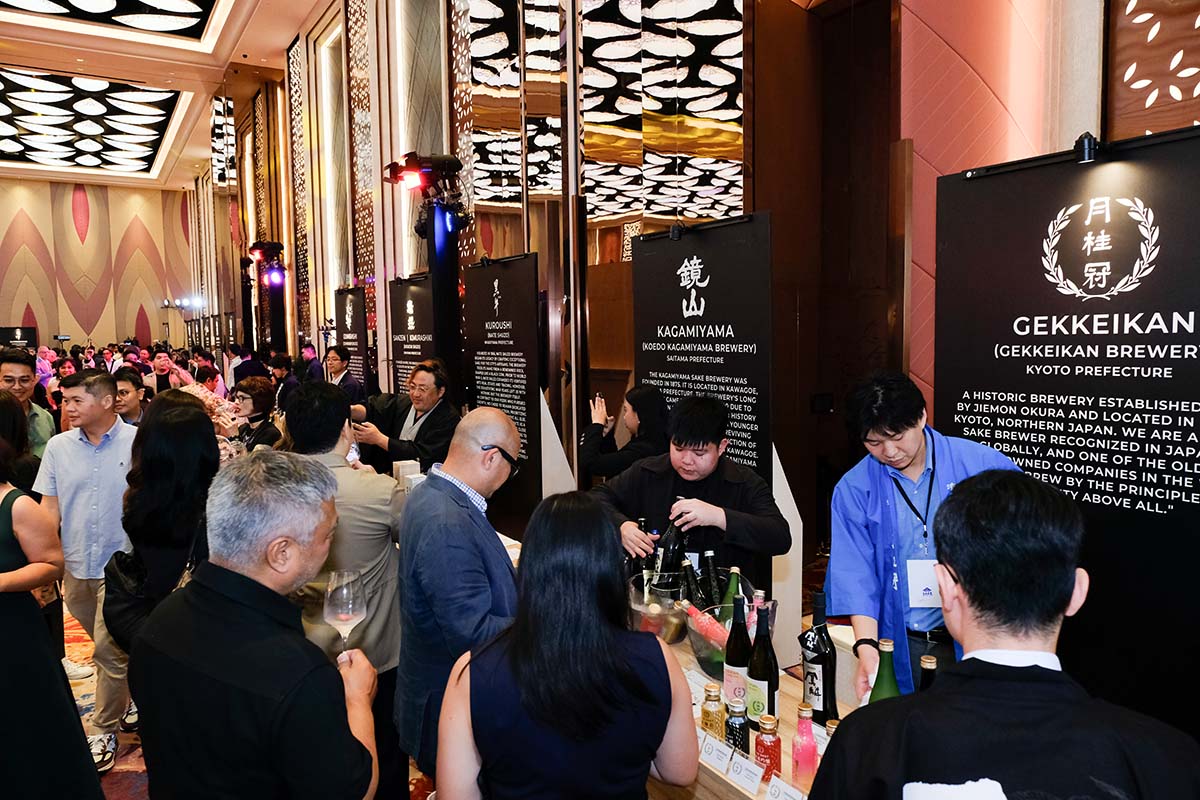
There was a rhythm to the night — a seamless blend of tradition and modernity, performance and conversation. Looking around the ballroom, you saw Filipinos and Japanese side by side, raising glasses, sharing stories, connecting. And that, really, is what it’s all about.
A Moment of Heart
One of the most genuine moments of the night came not from the performers, but from a candid speech.
Raymond Joseph, Director of Sales and Marketing at Philippine Wine Merchants — and one of the people who made this event happen — took the mic and shared something not often said onstage: he almost didn’t go through with it.
“I just wanted to rest,” he said, plainly.
The weight of logistics, expectations, and pressure nearly took its toll. But then he shared how people had flown in just to be there, how guests said they looked forward to it all year. That, he said, gave him the energy to keep pushing.
It was a reminder of what makes these gatherings matter. It’s not just about brands or business. It’s about people showing up — for culture, for community, for something that goes deeper than a drink.
And with that, he confirmed: SAKE MANILA will be back in 2026.
Food That Matched the Moment
Of course, no celebration like this is complete without food — and Okada’s Executive Chef Josef Teuschler understood the assignment. His dishes didn’t try to steal the spotlight from the drinks; they complemented them. Each bite was thoughtful, balanced, and quietly brilliant.
The raffle added a bit of buzz to the evening: luxury Okada stays, a beach getaway in Bohol, a Starlink unit (a sharp modern touch), and the grand prize — two business class tickets to Japan courtesy of Cathay Pacific.
Looking Ahead
While the highlight may have been the sake, what lingered was the atmosphere — a feeling of warmth, respect, and genuine cultural connection.
In a time when the world can feel fractured, SAKE MANILA showed what’s possible when tradition and hospitality are at the center. It wasn’t about spectacle — it was about sincerity. And that’s what people remembered.
I’ve long wanted to travel across Japan to visit the many legendary distilleries — to walk through their brewing halls, meet the masters, and soak it all in. But after a night like this, I’m starting to think I don’t need to. I just need to be at SAKE MANILA.
Here’s to 2026 — and to raising our next glass across cultures, with meaning.
Kanpai.



